Immunology/Inflammation
The immune and inflammation-related pathway including the Toll-like receptors pathway, the B cell receptor signaling pathway, the T cell receptor signaling pathway, etc.
Toll-like receptors (TLRs) play a central role in host cell recognition and responses to microbial pathogens. TLR4 initially recruits TIRAP and MyD88. MyD88 then recruits IRAKs, TRAF6, and the TAK1 complex, leading to early-stage activation of NF-κB and MAP kinases [1]. TLR4 is endocytosed and delivered to intracellular vesicles and forms a complex with TRAM and TRIF, which then recruits TRAF3 and the protein kinases TBK1 and IKKi. TBK1 and IKKi catalyze the phosphorylation of IRF3, leading to the expression of type I IFN [2].
BCR signaling is initiated through ligation of mIg under conditions that induce phosphorylation of the ITAMs in CD79, leading to the activation of Syk. Once Syk is activated, the BCR signal is transmitted via a series of proteins associated with the adaptor protein B-cell linker (Blnk, SLP-65). Blnk binds CD79a via non-ITAM tyrosines and is phosphorylated by Syk. Phospho-Blnk acts as a scaffold for the assembly of the other components, including Bruton’s tyrosine kinase (Btk), Vav 1, and phospholipase C-gamma 2 (PLCγ2) [3]. Following the assembly of the BCR-signalosome, GRB2 binds and activates the Ras-guanine exchange factor SOS, which in turn activates the small GTPase RAS. The original RAS signal is transmitted and amplified through the mitogen-activated protein kinase (MAPK) pathway, which including the serine/threonine-specific protein kinase RAF followed by MEK and extracellular signal related kinases ERK 1 and 2 [4]. After stimulation of BCR, CD19 is phosphorylated by Lyn. Phosphorylated CD19 activates PI3K by binding to the p85 subunit of PI3K and produce phosphatidylinositol-3,4,5-trisphosphate (PIP3) from PIP2, and PIP3 transmits signals downstream [5].
Central process of T cells responding to specific antigens is the binding of the T-cell receptor (TCR) to specific peptides bound to the major histocompatibility complex which expressed on antigen-presenting cells (APCs). Once TCR connected with its ligand, the ζ-chain–associated protein kinase 70 molecules (Zap-70) are recruited to the TCR-CD3 site and activated, resulting in an initiation of several signaling cascades. Once stimulation, Zap-70 forms complexes with several molecules including SLP-76; and a sequential protein kinase cascade is initiated, consisting of MAP kinase kinase kinase (MAP3K), MAP kinase kinase (MAPKK), and MAP kinase (MAPK) [6]. Two MAPK kinases, MKK4 and MKK7, have been reported to be the primary activators of JNK. MKK3, MKK4, and MKK6 are activators of P38 MAP kinase [7]. MAP kinase pathways are major pathways induced by TCR stimulation, and they play a key role in T-cell responses.
Phosphoinositide 3-kinase (PI3K) binds to the cytosolic domain of CD28, leading to conversion of PIP2 to PIP3, activation of PKB (Akt) and phosphoinositide-dependent kinase 1 (PDK1), and subsequent signaling transduction [8].
References
[1] Kawai T, Akira S. The role of pattern-recognition receptors in innate immunity: update on Toll-like receptors[J]. Nature immunology, 2010, 11(5): 373-384.
[2] Kawai T, Akira S. Toll-like receptors and their crosstalk with other innate receptors in infection and immunity[J]. Immunity, 2011, 34(5): 637-650.
[3] Packard T A, Cambier J C. B lymphocyte antigen receptor signaling: initiation, amplification, and regulation[J]. F1000Prime Rep, 2013, 5(40.10): 12703.
[4] Zhong Y, Byrd J C, Dubovsky J A. The B-cell receptor pathway: a critical component of healthy and malignant immune biology[C]//Seminars in hematology. WB Saunders, 2014, 51(3): 206-218.
[5] Baba Y, Matsumoto M, Kurosaki T. Calcium signaling in B cells: regulation of cytosolic Ca 2+ increase and its sensor molecules, STIM1 and STIM2[J]. Molecular immunology, 2014, 62(2): 339-343.
[6] Adachi K, Davis M M. T-cell receptor ligation induces distinct signaling pathways in naive vs. antigen-experienced T cells[J]. Proceedings of the National Academy of Sciences, 2011, 108(4): 1549-1554.
[7] Rincón M, Flavell R A, Davis R A. The Jnk and P38 MAP kinase signaling pathways in T cell–mediated immune responses[J]. Free Radical Biology and Medicine, 2000, 28(9): 1328-1337.
[8] Bashour K T, Gondarenko A, Chen H, et al. CD28 and CD3 have complementary roles in T-cell traction forces[J]. Proceedings of the National Academy of Sciences, 2014, 111(6): 2241-2246.
Targets for Immunology/Inflammation
- Cyclic GMP-AMP Synthase(1)
- Apoptosis(137)
- 5-Lipoxygenase(18)
- TLR(98)
- Papain(1)
- PGDS(1)
- PGE synthase(24)
- SIKs(10)
- IκB/IKK(60)
- AP-1(1)
- KEAP1-Nrf2(35)
- NOD1(1)
- NF-κB(214)
- Interleukin Related(120)
- 15-lipoxygenase(2)
- Others(10)
- Aryl Hydrocarbon Receptor(32)
- CD73(16)
- Complement System(46)
- Galectin(30)
- IFNAR(19)
- NO Synthase(69)
- NOD-like Receptor (NLR)(36)
- STING(83)
- Reactive Oxygen Species(384)
- FKBP(11)
- eNOS(4)
- iNOS(24)
- nNOS(20)
- Glutathione(37)
- Adaptive Immunity(144)
- Allergy(129)
- Arthritis(25)
- Autoimmunity(134)
- Gastric Disease(64)
- Immunosuppressants(27)
- Immunotherapeutics(3)
- Innate Immunity(411)
- Pulmonary Diseases(76)
- Reactive Nitrogen Species(43)
- Specialized Pro-Resolving Mediators(42)
- Reactive Sulfur Species(24)
Products for Immunology/Inflammation
- Cat.No. Nombre del producto Información
-
GC41740
(S)-p38 MAPK Inhibitor III
(S)-p38 MAP Kinase Inhibitor III, (S)-p38 Mitogen-activated Protein Kinase Inhibitor III
(S)-p38 MAPK inhibitor III is a methylsulfanylimidazole that inhibits p38 MAP kinase (IC50 = 0.90 μM in vitro).
-
GC46356
(Z)-9-Hexadecenol
(9Z)-Hexadecen-1-ol, cis-9-Hexadecenol, Palmitoleyl Alcohol, (Z)-9-Hexadecen-1-ol, Z9-16:OH
An unsaturated long-chain fatty alcohol with diverse biological activities
-
GC38880
(Z)-Leukadherin-1
ADH-503 free base
(Z)-Leukadherin-1 (ADH-503 base libre) es un agonista de CD11b alostérico activo por vÍa oral. La (Z)-leucadherina-1 conduce a la repolarizaciÓn de los macrÓfagos asociados al tumor, reduce el nÚmero de células mieloides inmunosupresoras que infiltran el tumor y mejora las respuestas de las células dendrÍticas.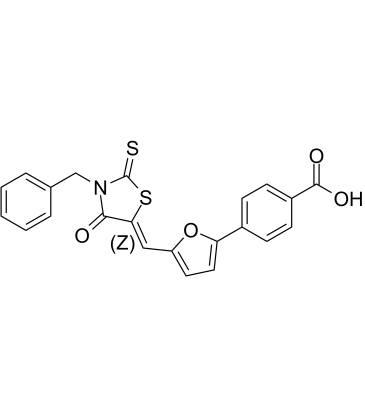
-
GC18787
(±)-Dunnione
NSC 95403
(±)-Dunnione is a naturally occurring naphthoquinone with diverse biological activities.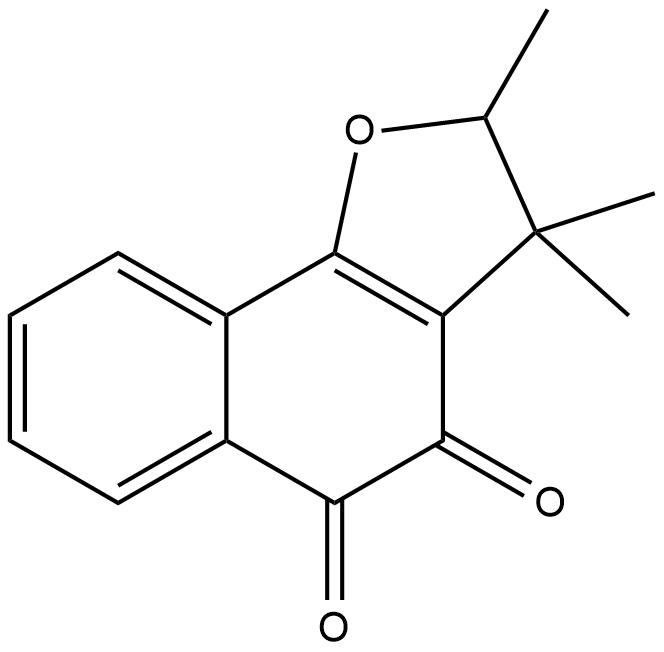
-
GC13662
(±)-Lisofylline
BL 194,CT-1501R,LSF
(±)-Lisofylline ((±)-Lisophylline) es el racemato de Lisophylline.
-
GC46054
1β-Acetoxypolygodial
A sesquiterpenoid

-
GC49768
1,1’-Ethylidene-bis-(L-tryptophan)
Peak 97 Contaminant, Peak E Contaminant, Peak E Substance
A potential impurity found in commercial preparations of L-tryptophan
-
GC45285
1,2,3-Trihexanoyl-rac-glycerol
Glycerol trihexanoate, NSC 406885, Tricaproin, Trihexanoin

-
GC46042
1,2-Dipalmitoyl-13C-sn-glycero-3-PC
1,2-Dihexadecanoyl-13C-sn-glycero-3-Phosphatidylcholine, 1,2-Dihexadecanoyl-13C-sn-glycero-3-Phosphocholine, DPPC-13C2, 16:0-13C/16:0-13C-PC, PC(16:0-13C/16:0-13C)
An internal standard for the quantification of 1,2-dipalmitoyl-sn-glycero-3-PC
-
GC45781
1,2-Dipalmitoyl-d31-sn-glycero-3-PC
1,2-Dihexadecanoyl-d62-sn-glycero-3-Phosphatidylcholine, 1,2-Dihexadecanoyl-d62-sn-glycero-3-Phosphocholine, 16:0-d31/16:0-d31-PC, DPPC-d62, PC(16:0-d31/16:0-d31)
An internal standard for the quantification of 1,2-dipalmitoyl-sn-glycero-3-PC
-
GC46385
1,3,4,6-Tetra-O-acetyl-2-azido-2-deoxy-α-D-Mannopyranose
A ManNAc analog and building block

-
GC46386
1,3,6,8-Pyrenetetrasulfonic Acid (sodium salt hydrate)
P4S, PTS
A synthetic intermediate
-
GC41837
1,3,7-Trimethyluric Acid
8-oxo Caffeine, NSC 11259
El Ácido 1,3,7-trimetilÚrico es el metabolito de la cafeÍna. La proporciÓn metabÓlica de Ácido 1,3,7-trimetilÚrico a cafeÍna se puede evaluar como biomarcador para describir la variabilidad en la actividad de CYP3A en una cohorte.
-
GC46387
1,3,7-Trimethyluric Acid-d9
TMU-d9, 8-oxo Caffeine-d9
An internal standard for the quantification of 1,3,7-trimethyluric acid
-
GC35037
1,3-Dicaffeoylquinic acid
1,5-DCQA, 1,3-Dicaffeoylquinic Acid
El Ácido 1,3-dicafeoilquÍnico es un derivado del Ácido cafeoilquÍnico y activa PI3K/Akt.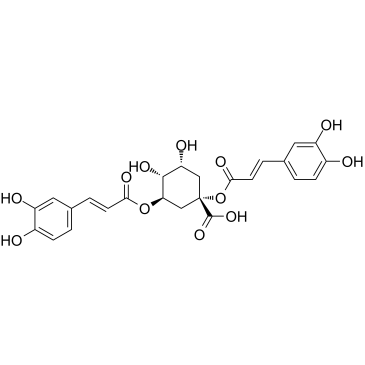
-
GC41855
1,3-Distearoyl-2-Oleoyl-rac-glycerol
1,3-Distearin-2-Olein, TG(18:0/18:1/18:0)
1,3-Distearoyl-2-oleoyl-rac-glycerol is a triacylglycerol that contains stearic acid at the sn-1 and sn-3 positions and oleic acid at the sn-2 position.
-
GC11173
1,3-PBIT (dihydrobromide)
potent inhibitor of iNOS
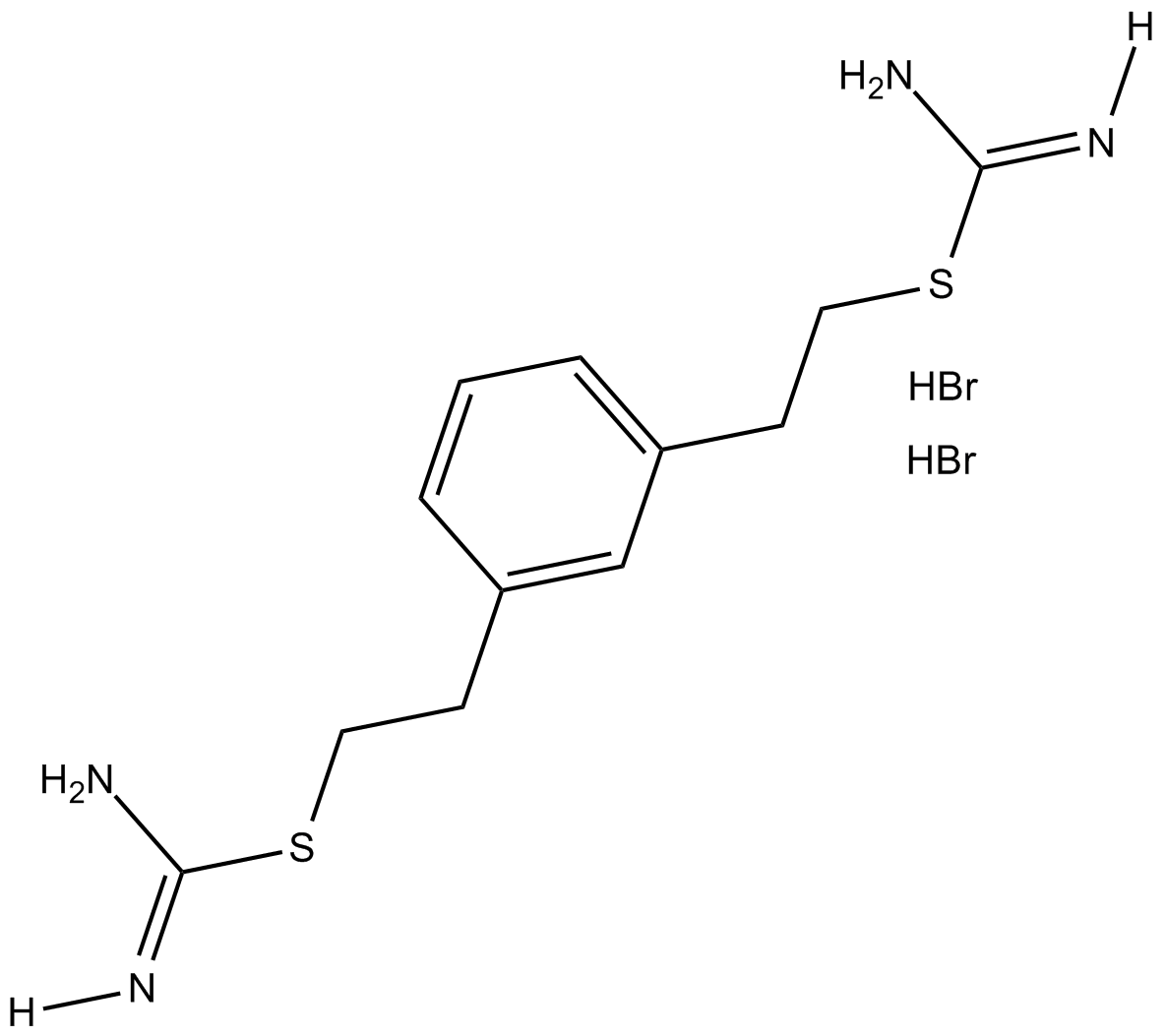
-
GC33314
1,4-Chrysenequinone (Chrysene-1,4-dione)
La 1,4-crisenequinona (criseno-1,4-diona), una quinona aromÁtica policÍclica, actÚa como activador del receptor de hidrocarburos arÍlicos (AhR).
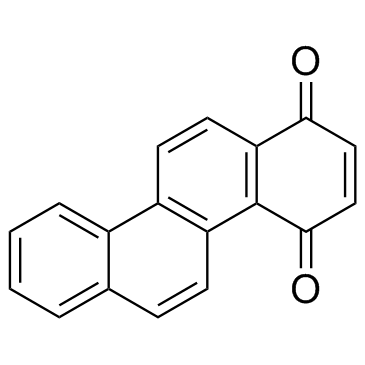
-
GC14627
1,4-PBIT (dihydrobromide)
potent inhibitor of purified human iNOS and nNOS
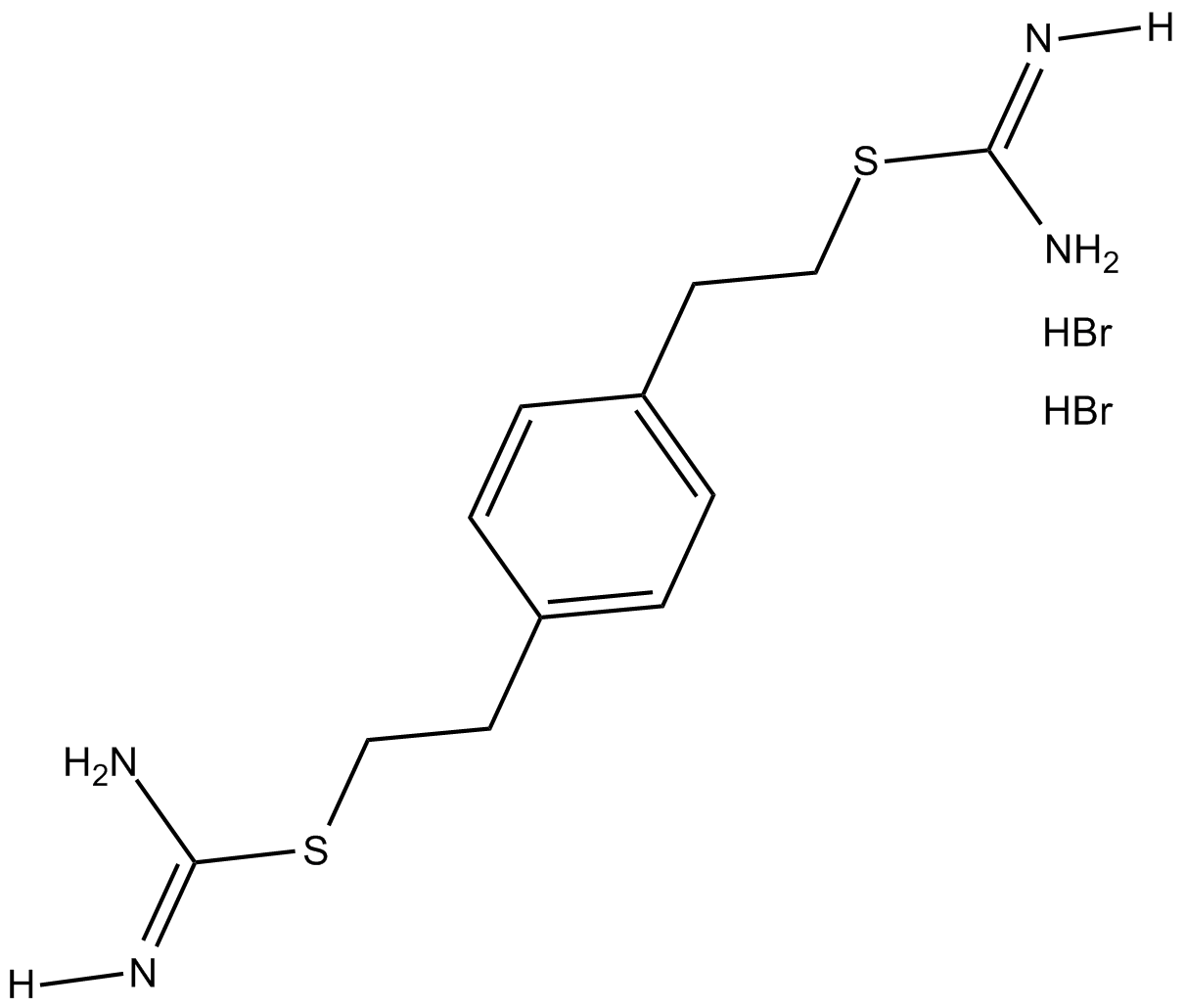
-
GC40706
1,6-Dimethoxyphenazine
Crystalloiodinine B
1,6-Dimethoxyphenazine is a bacterial metabolite that has been found in S.
-
GC49294
1-(4-Chlorobenzhydryl)piperazine
N-(p-Chlorobenzhydryl)-piperazine, Norchlorcyclizine, NSC 86164
An inactive metabolite of meclizine and chlorcyclizine
-
GC41986
1-Arachidonoyl Lysophosphatidic Acid (ammonium salt)
1-Arachidonoyl LPA, 1-Arachidonoyl-sn-glycero-3-phosphate, 1-Eicosatetraenoyl-sn-glycero-3-PA, 20:4 Lyso PA, LPA(20:4), PA(20:4/0:0)
1-Arachidonoyl lysophosphatidic acid is a phospholipid containing arachidonic acid at the sn-1 position.

-
GC41990
1-Decanoyl-rac-glycerol
MG(10:0/0:0/0:0), 1-Monocaprin, 1-Monodecanoin
1-Decanoyl-rac-glycerol is a monoacylglycerol that contains decanoic acid at the sn-1 position.
-
GC52186
1-Docosahexaenoyl-2-hydroxy-sn-glycero-3-PC
1-Docosahexaenoyl-2-hydroxy-sn-glycero-3-Phosphocholine, LysoPC(22:6/0:0), PC(22:6/0:0), 22:6/0:0-PC

-
GC45957
1-Heptadecanoyl-rac-glycerol
MG(17:0/0:0/0:0), 1-Heptadecanoin
A monoacylglycerol
-
GC46481
1-Hydroxyphenazine
Hemipyocyanine, NSC 88882
A P. aeruginosa virulence factor
-
GC49495
1-Isothiocyanato-6-(methylsulfenyl)-hexane
Lesquerellin, 6-Methylthiohexyl Isothiocyanate
An isothiocyanate with diverse biological activities
-
GC45696
1-Lauroyl-rac-glycerol
MG(12:0/0:0/0:0), 1-Monolaurin, NSC 698570
El 1-lauroil-rac-glicerol (1-1-lauroil-rac-glicerol) posee actividad antiviral y antibacteriana.
-
GC41998
1-Methyl-4-imidazoleacetic Acid (hydrochloride)
Methylimidazoleacetic Acid, MIMA, MIAA
1-Methyl-4-imidazoleacetic acid (MIMA) is a stable metabolite of histamine that is produced by the oxidation of the primary metabolite, N-methylhistamine.
-
GC13379
1-Naphthyl 3,5-dinitrobenzoate
1-(3,5-Dinitrobenzoyloxy)naphthalene,1-Naphthalonol 3,5-dinitrobenzoate
dual 5-lipoxygenase and microsomal prostaglandin E synthase-1 inhibitor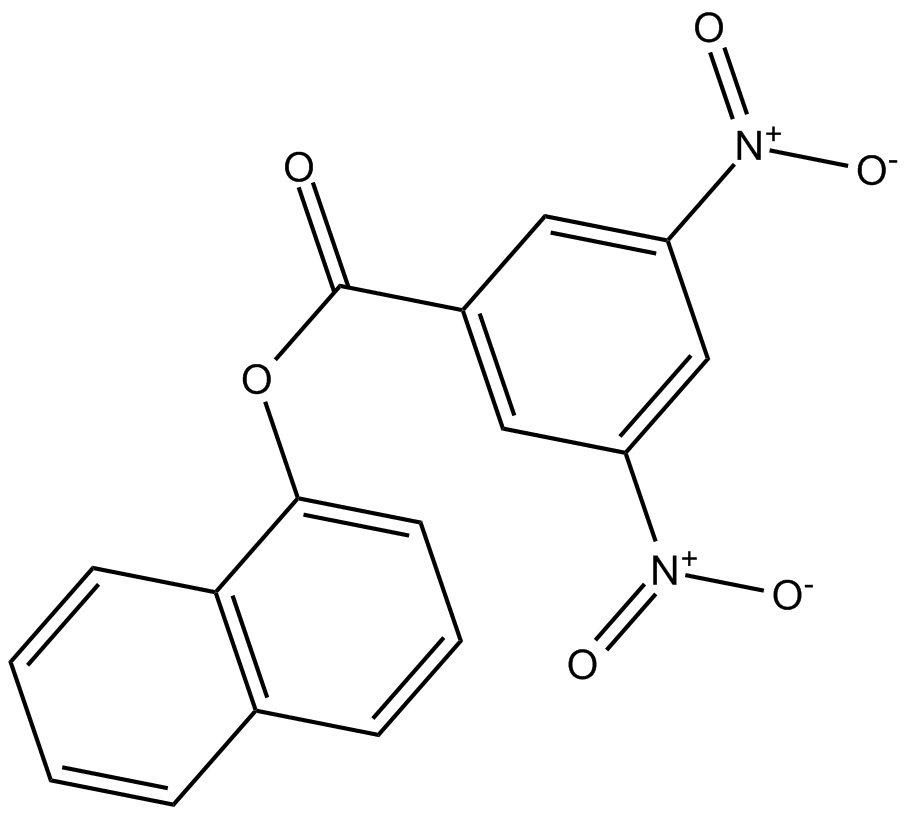
-
GC18235
1-O-Hexadecyl-sn-glycerol
α-Chimyl Alcohol, (S)-(+)-Chimyl Alcohol
1-O-Hexadecyl-sn-glycerol is a bioactive alkyl glyceryl ether.
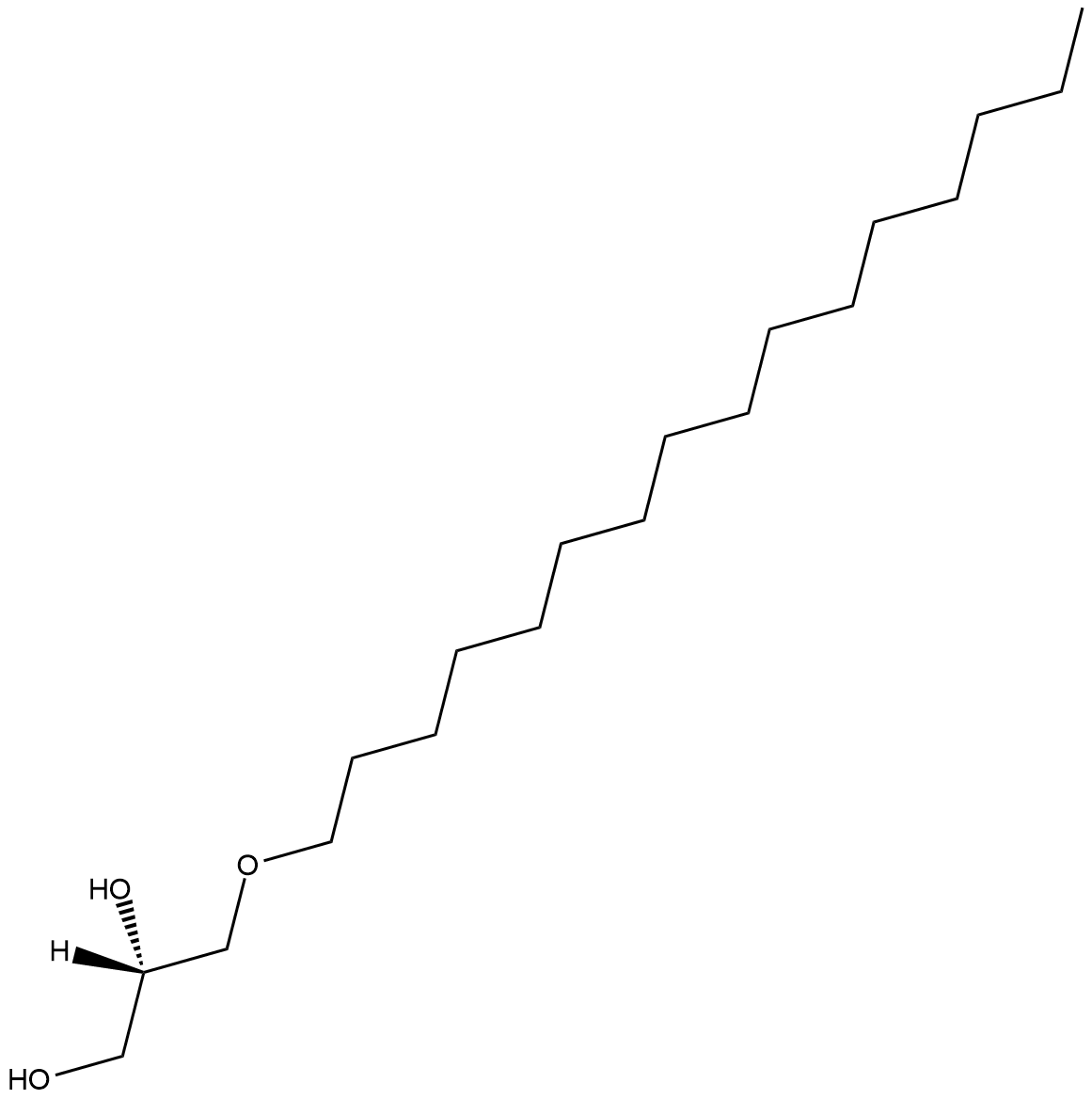
-
GC42010
1-Octanoyl-rac-glycerol
1-Monocaprylin, 1-Monooctanoin, 1-Monooctanoyl-rac-glycerol, Glycerol-1-Octanoate, MG(8:0/0:0/0:0)
1-Octanoyl-rac-glycerol is a monoacylglycerol that contains octanoic acid at the sn-1 position.
-
GC40910
1-Oleoyl-2-hydroxy-sn-glycero-3-PE
18:1 LPE, 18:1 Lyso-PE, 1-Oleoyl-2-hydroxy-sn-glycero-3-phosphoethanolamine
1-Oleoyl-2-hydroxy-sn-glycero-3-PE is a naturally-occurring lysophospholipid and an analog of plasmalogen lysophosphatidylethanolamine.
-
GC40146
1-Oleoyl-2-Palmitoyl-rac-glycerol
18:1/16:0-DG, DG(18:1/16:0/0:0), 1,2-OP, 1-Olein-2-Palmitin
1-Oleoyl-2-palmitoyl-rac-glycerol (1,2-OP) is a diacylglycerol containing oleic acid at the sn-1 position and palmitic acid at the sn-2 position.
-
GC18376
1-Palmitoleoyl glycerol
1-Monopalmitoleoyl-rac-glycerol
1-Palmitoleoyl glycerol is a bioactive monoacylglycerol.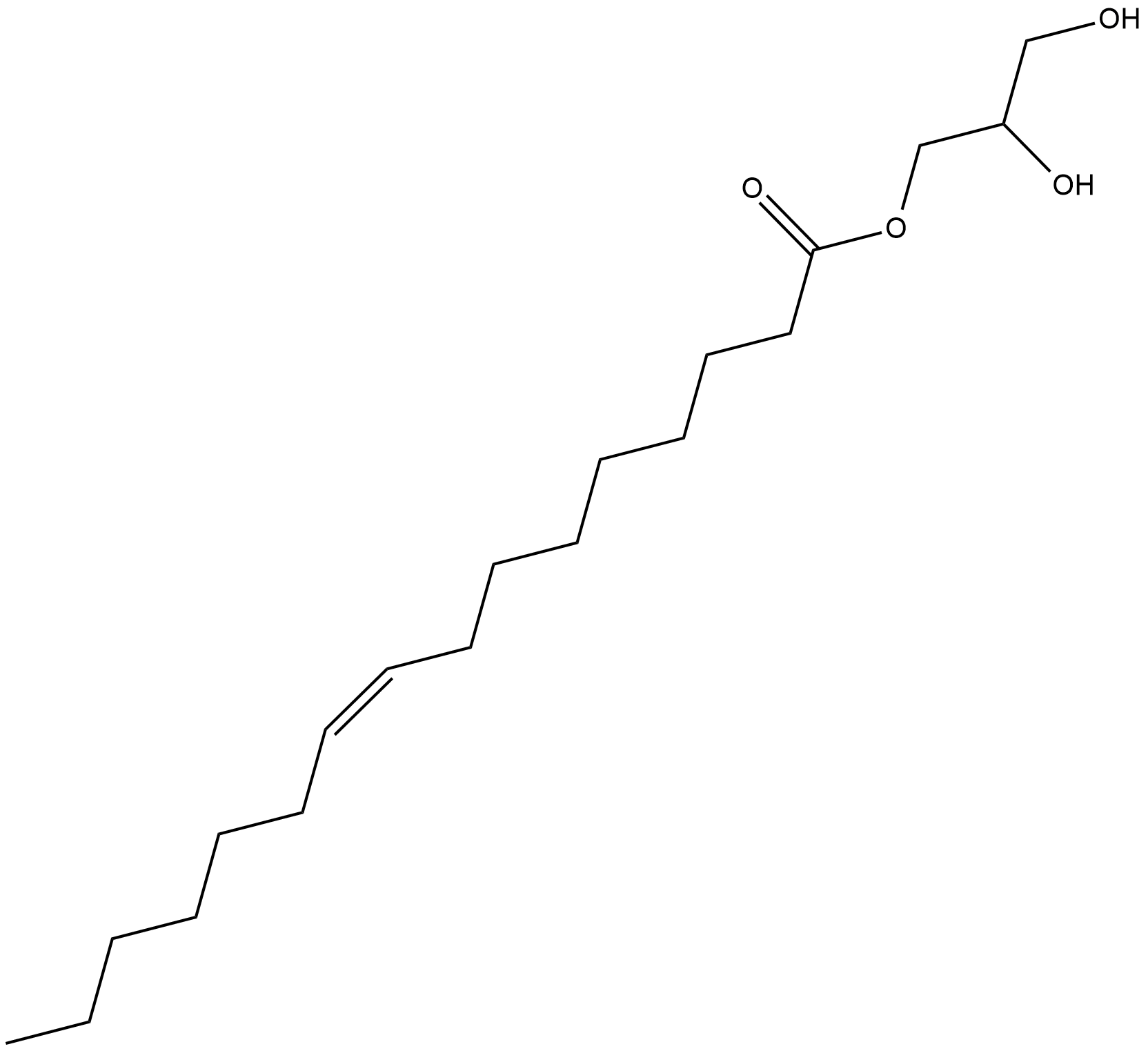
-
GC42020
1-Palmitoyl Lysophosphatidic Acid
1-Palmitoyl LPA
1-Palmitoyl lysophosphatidic acid (1-Palmitoyl LPA) is a LPA analog containing palmitic acid at the sn-1 position.
-
GC42021
1-Palmitoyl Lysophosphatidic Acid (sodium salt)
1Palmitoyl LPA
1-Palmitoyl lysophosphatidic acid (1-Palmitoyl LPA) is a LPA analog containing palmitic acid at the sn-1 position.
-
GC42023
1-Palmitoyl-2-Arachidonoyl-sn-glycero-3-PC
1-Palmitoyl-2-Arachidonoyl-sn-glycero-3-Phosphocholine, PAPC, PC(16:0/20:4)
1-Palmitoyl-2-arachidonoyl-sn-glycero-3-PC (PAPC) is a phospholipid containing palmitic acid (16:0) and arachidonic acid (20:4) at the sn-1 and sn-2 positions, respectively, that is found in biological membranes.
-
GC42026
1-Palmitoyl-2-hydroxy-sn-glycero-3-PC
1-Hexadecanoyl-sn-glycero-3-Phosphatidylcholine, 1-Hexadecanoyl-sn-glycero-3-Phosphocholine, 1-Hexadecanoyl-sn-glycerol-3-Phosphorylcholine, Lyso-PC, 1-Palmitoyl-sn-glycero-3-Phosphocholine, PC(16:0/0:0), 16:0/0:0-PC
La 1-palmitoil-2-hidroxi-sn-glicero-3-PC es una abundante LPC gonadal (lisofosfatidilcolina).
-
GC18651
1-Palmitoyl-2-hydroxy-sn-glycero-3-PE
1-Hexadecanoyl-sn-glycero-3-Phosphoethanolamine
1-Palmitoyl-2-hydroxy-sn-glycero-3-PE is a naturally-occurring lysophospholipid.
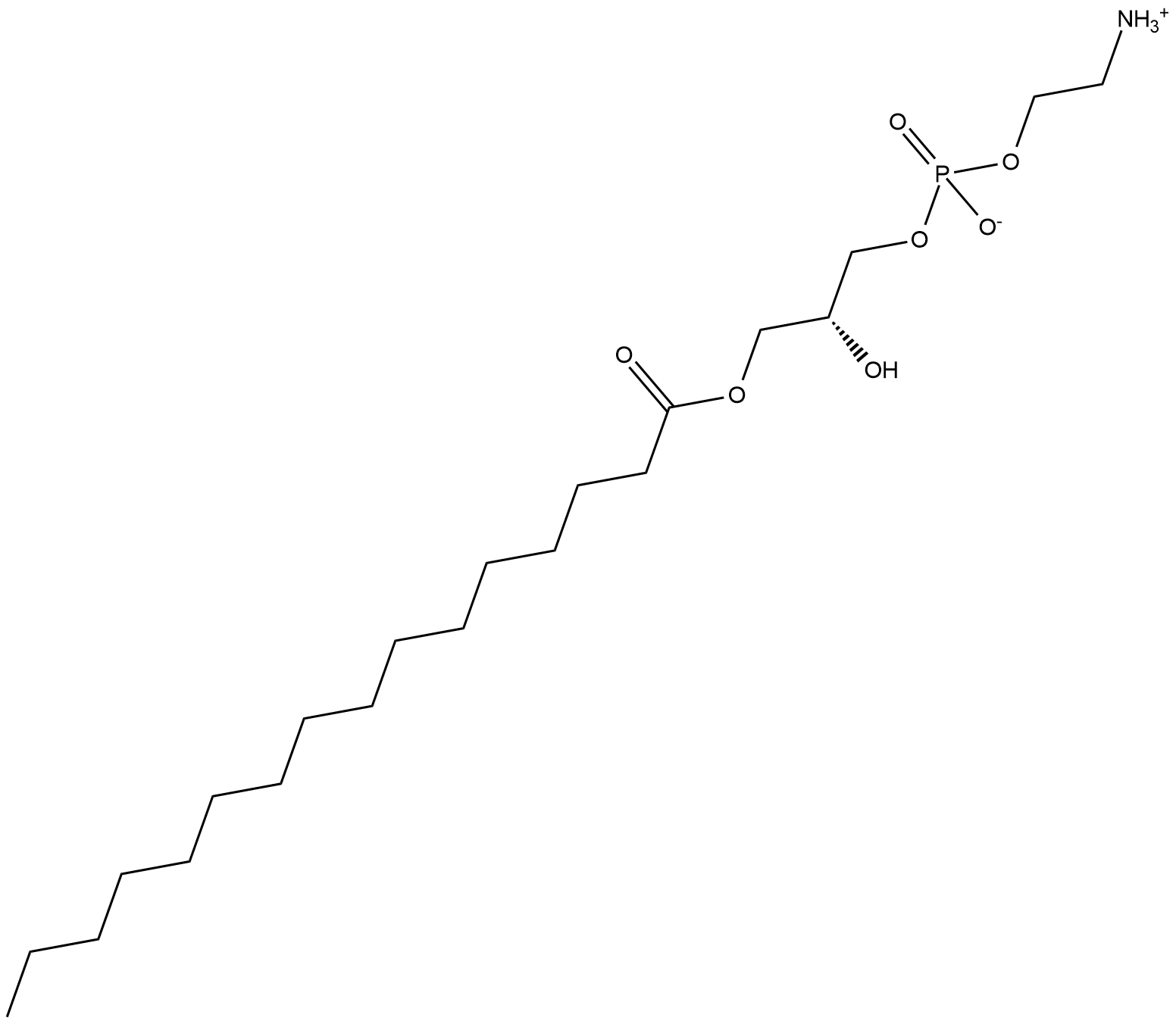
-
GC42035
1-Palmitoyl-2-Stearoyl-3-Oleoyl-rac-glycerol
1-Palmitin-2-Stearin-3-Olein, TG(16:0/18:0/18:1)
1-Palmitoyl-2-stearoyl-3-oleoyl-rac-glycerol is a triacylglycerol that contains palmitic, stearic, and oleic acid at the sn-1, sn-2, and sn-3 positions, respectively.
-
GC49071
1-Palmitoyl-d9 Lysophosphatidic Acid
1-Palmitoyl-d9 LPA
An internal standard for the quantification of 1-palmitoyl lysophosphatidic acid
-
GC45693
1-Palmitoyl-d9-2-hydroxy-sn-glycero-3-PC
1-Hexadecanoyl-d9-sn-glycero-3-Phosphatidylcholine, 1-Hexadecanoyl-d9-sn-glycero-3-Phosphocholine, 16:0(d9) Lyso-PC, PC(16:0-d9/0:0), 16:0-d9/0:0-PC
A quantitative analytical standard guaranteed to meet MaxSpec® identity, purity, stability, and concentration specifications
-
GC42040
1-Stearoyl-2-15(S)-HETE-sn-glycero-3-PE
15(S)-HETE-SAPE, 15(S)-Hydroxyeicosatetraenoic Acid-SAPE, 1-Stearoyl-2-15(S)-HETE-sn-glycero-3-Phosphatidylethanolamine
1-Stearoyl-2-15(S)-HETE-sn-glycero-3-PE is a phospholipid that contains stearic acid at the sn-1 position and 15(S)-HETE at the sn-2 position.
-
GC49730
1-Stearoyl-2-15(S)-HETE-sn-glycero-3-PE-d11
15(S)-HETE-SAPE-d11, 15(S)-Hydroxyeicosatetraenoic Acid-SAPE-d11, 1-Stearoyl-2-15(S)-HETE-sn-glycero-3-Phosphatidylethanolamine-d11
An internal standard for the quantification of 1-stearoyl-2-15(S)-HETE-sn-glycero-3-PE
-
GC41331
1-Stearoyl-2-hydroxy-sn-glycero-3-PC
C18:0-PC, Lyso-PC, 1-Octadecanoyl-2-hydroxy-sn-glycero-3-phosphatidylcholine, PC(18:0/0:0), 1-Stearoyl-2-hydroxy-sn-glycero-3-Phosphocholine, 1-Stearoyl-2-lyso-sn-glycero-3-PC
1-Stearoyl-2-hydroxy-sn-glycero-3-PC is a saturated 18:0 lysophosphatidylcholine found in plasma and oxidized LDL that is thought to play a role in inflammatory diseases and atherosclerosis.
-
GC46498
1-Stearoyl-d35-2-hydroxy-sn-glycero-3-PC
S-Lyso-PC-d35, 1-Stearoyl-d35-2-hydroxy-sn-glycero-3-Phosphocholine, 1-Stearoyl-d35-2-lyso-sn-glycero-3-PC
An internal standard for the quantification of 1-stearoyl-2-hydroxy-sn-glycero-3-PC
-
GC40176
1-Stearoyl-rac-glycerol
18:0-MG, MG(18:0/0:0/0:0), 1-Monostearin, NSC 3875
1-Stearoyl-rac-glycerol is a monoacylglycerol that contains stearic acid at the sn-1 position.
-
GC46501
1-thio-β-D-Glucose Tetraacetate
A building block

-
GC45785
1-Undecanoyl-rac-glycerol
MG(11:0/0:0/0:0), 1-Undecanoin
A monoacylglycerol
-
GC41865
10'-Desmethoxystreptonigrin
10'-Desmethoxystreptonigrin is an antibiotic originally isolated from Streptomyces and a derivative of the antibiotic streptonigrin.

-
GC46400
10(11)-Cl-BBQ Mixture
A mixture that acts as an AhR agonist

-
GC40971
10(S),17(S)-DiHDHA
10(S),17(S)-DiHDoHE, PDX, Protectin DX
El 10(S),17(S)-DiHDHA (también conocido como neuroprotectina D1 cuando se produce en los tejidos neuronales) es un Ácido graso dihidroxi derivado del DHA que exhibe potentes actividades protectoras y antiinflamatorias.
-
GC50422
10-Cl-BBQ
Potent aryl hydrocarbon receptor (AhR) agonist; orally bioavailable
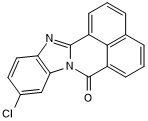
-
GC41866
10-methyl-9-(phenoxycarbonyl) Acridinium (trifluoromethylsulfonate)
10-methyl-9-(phenoxycarbonyl) Acridinium is an acridinium ester that produces fluorescent 10-methyl-9-acridone upon oxidation with hydrogen peroxide, persulfates, and other oxidants in alkaline conditions.

-
GC46402
10-Methyldodec-2-en-4-olide
A bacterial volatile lactone

-
GC41868
10-Nitrooleate
10Nitrooleic Acid, 10nitro9transOctadecenoic Acid
El 10-nitrooleato (CXA-10), un Ácido graso nitro, tiene efectos potenciales en estados patolÓgicos en los que el estrés oxidativo, la inflamaciÓn, la fibrosis y/o la toxicidad tisular directa juegan un papel importante.
-
GC46404
10-Norparvulenone
(±)-10-Norparvulenone
A fungal metabolite
-
GC52423
10Panx (trifluoroacetate salt)
10Panx1, WRQAAFVDSY
A peptide inhibitor of PANX1
-
GC41875
11(Z),14(Z)-Eicosadienoic Acid methyl ester
11(Z),14(Z)-Eicosadienoic acid methyl ester is a more lipid soluble form of the ω-6 C20-2 fatty acid 11(Z),14(Z)-eicosadienoic acid, a naturally occurring PUFA.

-
GC18634
11-deoxy Prostaglandin E1
11deoxy PGE1
11-deoxy Prostaglandin E1 (11-deoxy PGE1) is a synthetic analog of PGE1.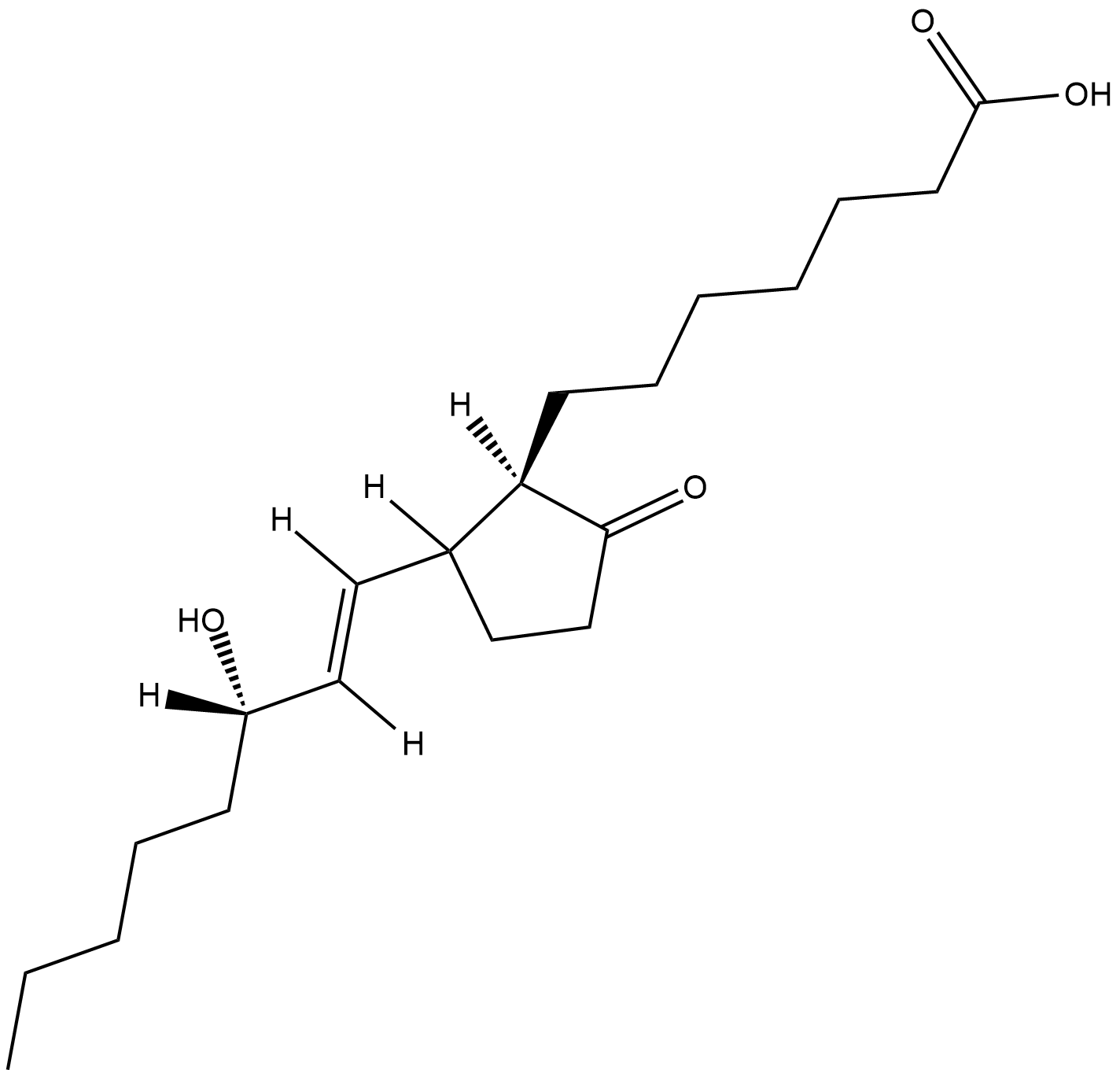
-
GC41121
11-deoxy Prostaglandin E2
11deoxy PGE2
11-deoxy Prostaglandin E2 (11-deoxy PGE2) is a stable, synthetic analog of PGE2.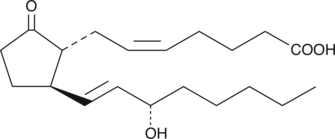
-
GC40274
11-deoxy Prostaglandin F2α
11deoxy PGF2α
11-deoxy PGF2α is a synthetic analog of PGF2α.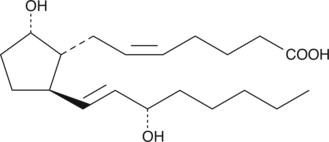
-
GC10821
11-keto-β-Boswellic Acid
11-oxo-β-Boswellic acid,KBA
El Ácido 11-Keto-beta-boswélico (11-Keto-β-Ácido boswélico) es un Ácido triterpénico pentacÍclico de la resina de oleogoma de la corteza del Árbol serrado de Boswellia, conocido popularmente como Incienso de la India. El Ácido 11-ceto-beta-boswélico tiene actividad antiinflamatoria que se debe principalmente a la inhibiciÓn de la 5-lipoxigenasa (5-LOX) y la posterior activaciÓn de los leucotrienos y el factor nuclear kappa B (NF-κB) y la generaciÓn del factor de necrosis tumoral alfa producciÓn.
-
GC41144
11-trans Leukotriene C4
11trans LTC4
11-trans Leukotriene C4 (11-trans LTC4) is a C-11 double bond isomer of LTC4.
-
GC41147
11-trans Leukotriene D4
11trans LTD4
11-trans Leukotriene D4 (11-trans LTD4) is a C-11 double bond isomer of LTD4.
-
GC41149
11-trans Leukotriene E4
11trans LTE4
El 11-trans leucotrieno E4 es un isÓmero del leucotrieno E4 (LTE4).
-
GC52343
113-O12B
An ionizable cationic lipidoid

-
GC18637
11β-Prostaglandin F2α
9α,11βPGF2α, 11βPGF2α, 11epi PGF2α
11β-Prostaglandin F2α (11β-PGF2α) is the primary plasma metabolite of PGD2 in vivo.
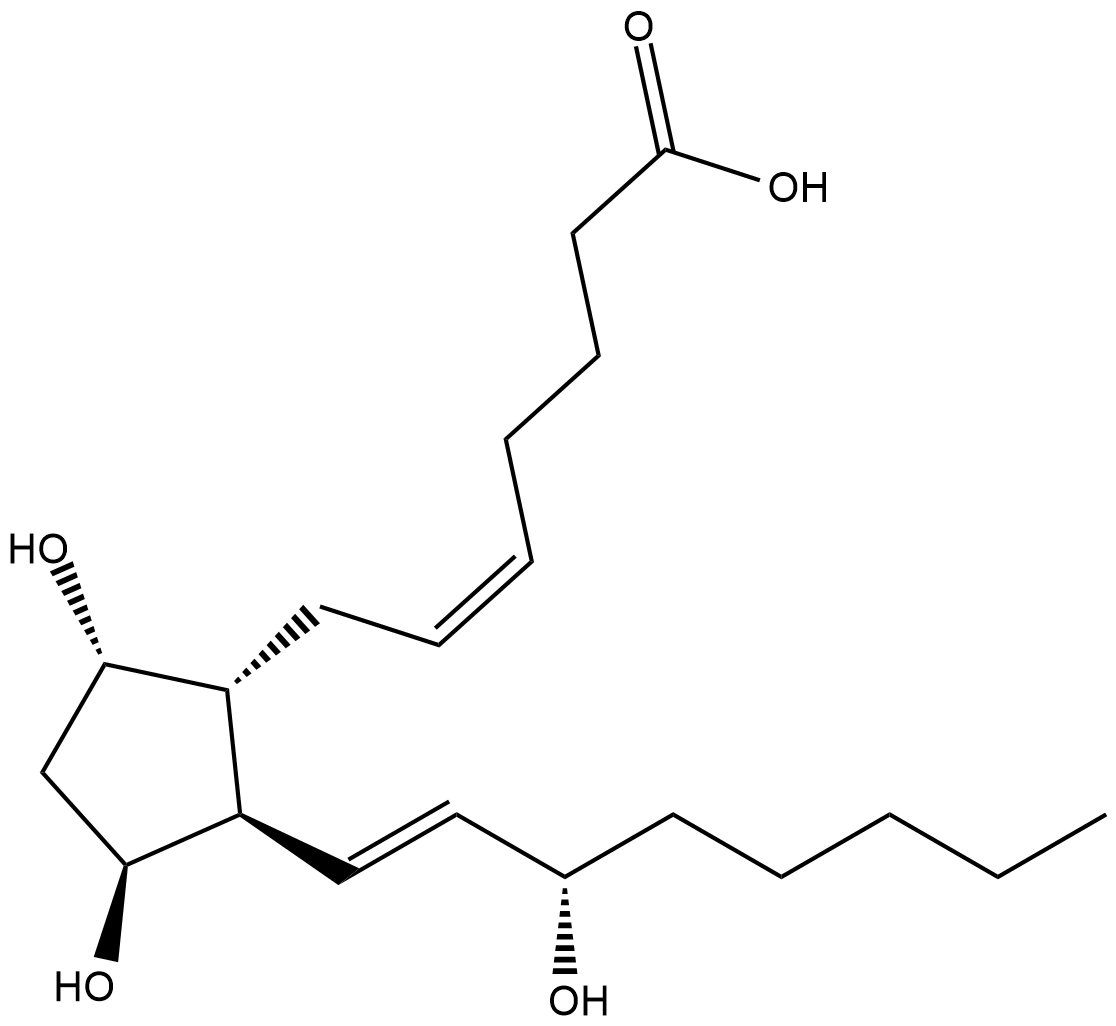
-
GC40447
12(R)-HETE
12(R)-Hydroxyeicosatetraenoic Acid
Biosynthesis of 12(R)-HETE in invertebrates is via lipoxygenation of arachidonic acid.
-
GC46415
12-Bromododecanoic Acid
12-Bromo-C12:0, 12-Bromododecanoate, 12-Bromolauric Acid, NSC 660375
A halogenated form of lauric acid
-
GC41123
12-epi Leukotriene B4
12epi LTB4
Leukotriene B4 (LTB4) compounds are produced by both enzymatic and non-enzymatic processes.
-
GC41332
12-methyl Myristic Acid methyl ester
Methyl 12-methyltetradecanoate
12-methyl Myristic acid methyl ester is a methylated fatty acid methyl ester that has been found in vermicomposts of cattle manure, carica papaya leaves, and cuticular wax of K.
-
GC49808
12-methyl Tridecanoic Acid
iso-14:0, iso-C14:0, 12-MTA
A methylated fatty acid
-
GC41096
12-oxo Leukotriene B4
12keto LTB4, 12oxo LTB4
Leukotriene B4 (LTB4) is a dihydroxy fatty acid derived from arachidonic acid through the 5-LO pathway.
-
GC52133
12-Tridecenoic Acid
ω-Tridecenoic acid

-
GC40578
13,14-dihydro-15-keto Prostaglandin D1
13,14dihydro15keto PGD1
Prostaglandin D1 (PGD1) is the theoretical D-series metabolite of dihomo-γ-linolenic acid (DGLA), but to date it has not been isolated as a natural product.
-
GC18783
13,14-dihydro-15-keto Prostaglandin E1
11α-Hydroxy-9,15-diketoprostanoic Acid, 15-keto-PGE0, 13,14-dihydro-15-keto PGE1, 15-keto-dihydro-PGE1, 15-keto Prostaglandin E0
13,14-dihydro-15-keto Prostaglandin E1 (PGE1) is a metabolite of PGE1 with much reduced biological activity.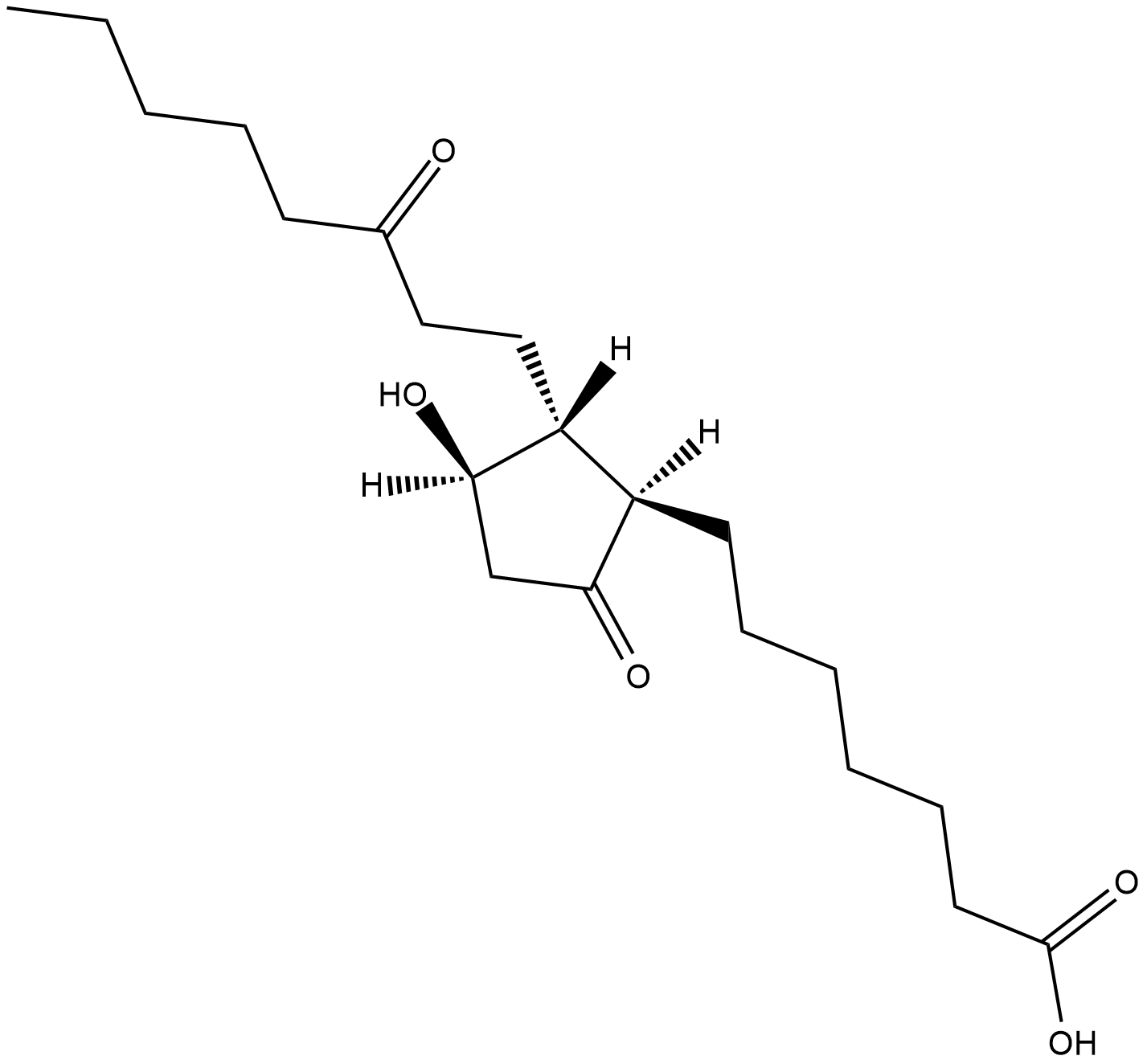
-
GC41333
13-methyl Myristic Acid methyl ester
Methyl Isopentadecanoate, 13-methyl Tetradecanoate, 13-methyl Tetradecanoic Acid methyl ester
13-methyl Myristic acid methyl ester is a methylated bacterial fatty acid methyl ester.
-
GC49759
13C17-Mycophenolic Acid
13C17-MPA
An internal standard for the quantification of mycophenolic acid
-
GC49912
13C20,15N10-Cyclic di-GMP (sodium salt)
13C20,15N10-c-di-GMP, 13C20,15N10-Cyclic diguanylate, 13C20,15N10-3’,5’-Cyclic diguanylic Acid
An internal standard for the quantification of cyclic di-GMP
-
GC49390
13C6-4-Nitroaniline
13C6-p-Nitroaniline
An internal standard for the quantification of 4-nitroaniline
-
GC41206
14(S)-HDHA
14(S)-hydroxy Docosahexaenoic Acid, 14(S)-HDoHE
14(S)-HDHA (14(S)-HDoHE) es un producto de oxigenaciÓn del Ácido docosahexaenoico (DHA).
-
GC41100
14,15-dehydro Leukotriene B4
14,15dehydro LTB4
Leukotriene B4 (LTB4) is a dihydroxy fatty acid derived from arachidonic acid through the 5-lipoxygenase pathway.
-
GC41145
14,15-Leukotriene C4
Eoxin C4, EXC4, 14,15LTC4
Leukotrienes (LTs) are a group of acute inflammatory mediators derived from arachidonic acid in leukocytes.
-
GC41148
14,15-Leukotriene D4
Eoxin D4, EXD4, 14,15-LTD4
14,15-Leukotriene D4 (14,15-LTD4) is a member of an alternate class of LTs synthesized by a pathway involving the dual actions of 15- and 12-lipoxygenases (15- and 12-LOs) on arachidonic acid via 15-HpETE and 14,15-LTA4 intermediates.
-
GC41150
14,15-Leukotriene E4
Eoxin E4, EXE4, 14,15LTE4
Leukotrienes (LTs) are a group of acute inflammatory mediators derived from arachidonic acid in leukocytes.
-
GC40763
14-deoxy-11,12-didehydro Andrographolide
14-dehydro Andrographolide
14-deoxy-11,12-didehydro Andrographolide es un análogo de Andrographolide.
-
GC41918
14-methyl Pentadecanoic Acid methyl ester
Methyl 14-methylpentadecanoate
14-methyl Pentadecanoic acid methyl ester is a methylated fatty acid methyl ester that has been found in S.
-
GC13563
1400W dihydrochloride
El diclorhidrato de 1400W es un inhibidor potente y selectivo de la NO sintasa inducible humana con valores de Ki de 7 nM.
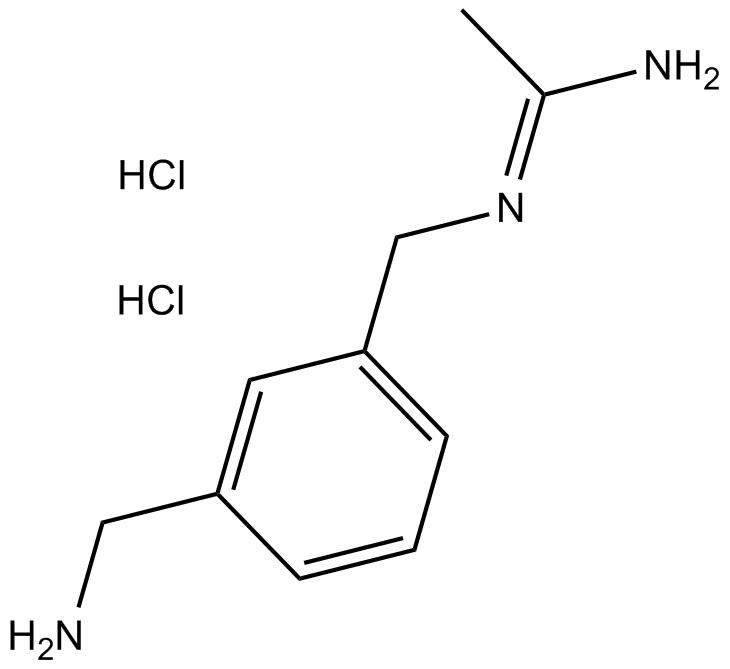
-
GC41164
15(R)-15-methyl Prostaglandin D2
15(R)15methyl PGD2
15(R)-15-methyl Prostaglandin D2 (15(R)-15-methyl PGD2) is a metabolically stable synthetic analog of PGD2.
-
GC41415
15(R)-Lipoxin A4
AT-Lipoxin A4
Lipid-derived lipoxins are produced at the site of vascular and mucosal inflammation where they down-regulate polymorphonuclear leukocyte recruitment and function.

-
GC40373
15(S)-HEPE
15S-hydroxy-Eicosapentaenoic Acid
15(S)-HEPE is a monohydroxy fatty acid synthesized from EPA by the action of 15-LO.
-
GC40451
15(S)-HETE
15(S)-Hydroxyeicosatetraenoic Acid
15(S)-HETE is a major arachidonic acid metabolite from the 15-lipoxygenase pathway.
-
GC41950
16α-hydroxy Estrone
16α-hydroxy E1, 16αOHE1
16α-hidroxi estrona (16αOHE) es un metabolito importante de estradiol.
-
GC18778
16,16-dimethyl Prostaglandin A1
16,16dimethyl PGA1
16,16-dimethyl PGA1 is a metabolism resistant analog of PGA1.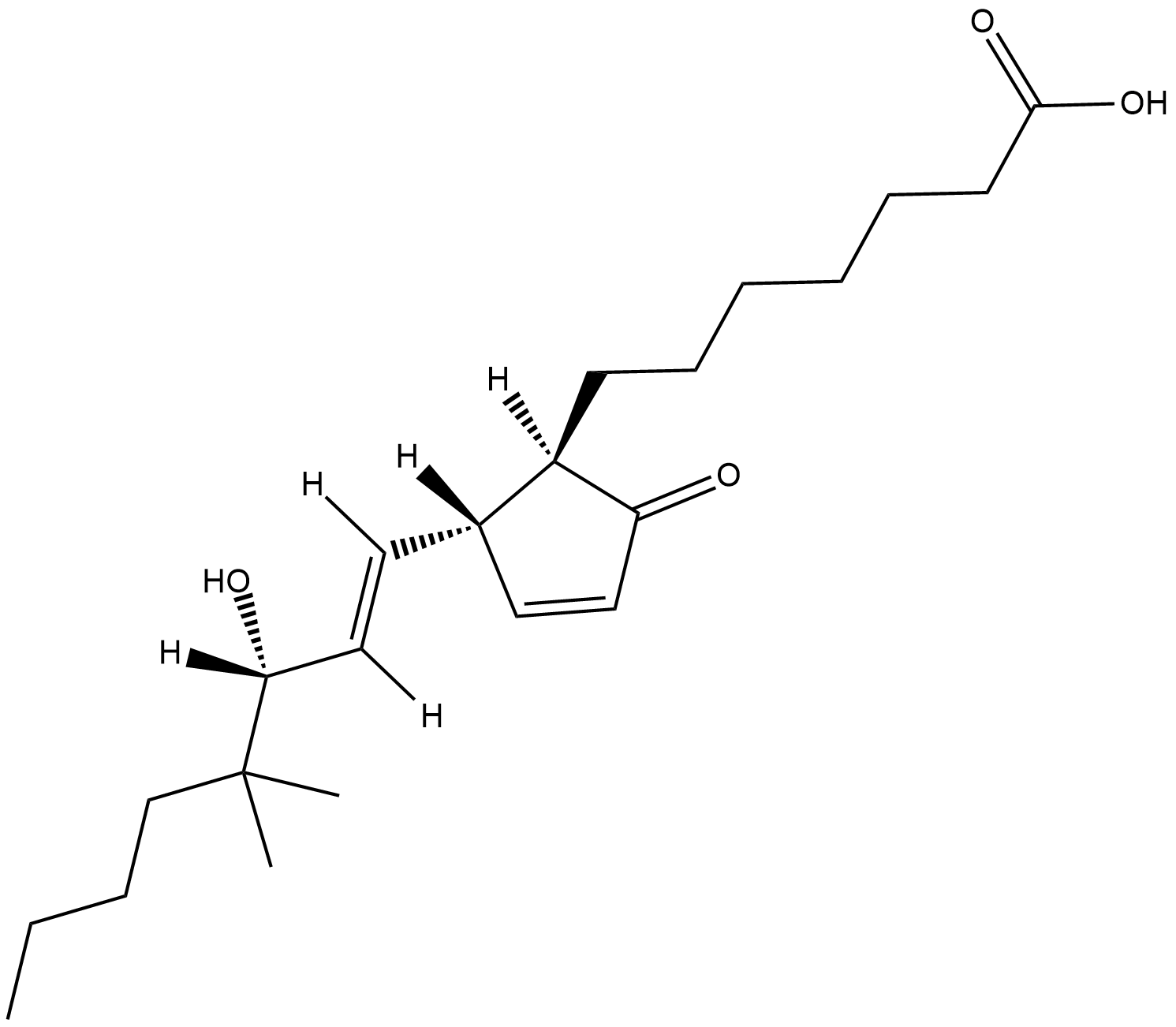
-
GC41942
16,16-dimethyl Prostaglandin A2
16,16dimethyl PGA2
16,16-dimethyl PGA2 is a metabolism-resistant analog of PGA2 with a prolonged in vivo half-life.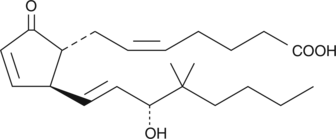
-
GC18803
16,16-dimethyl Prostaglandin F2β
9β,16,16dimethyl PGF2α, 16,16dimethyl PGF2β
16,16-dimethyl PGF2β is a metabolically stable analog of PGF2β.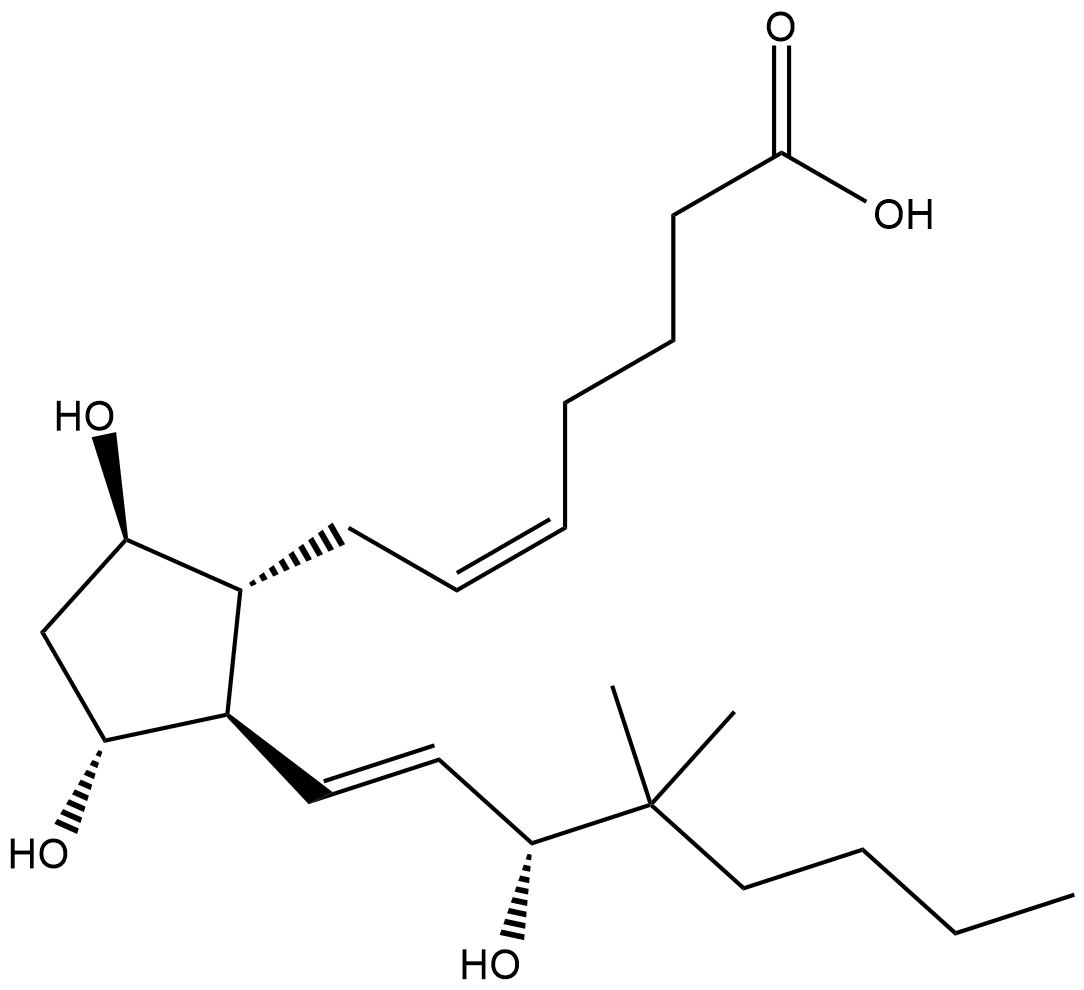
-
GC41110
16-epi Latrunculin B
16-epi Latrunculin B, first isolated from the Red Sea sponge N.

-
GC49068
16-Epiestriol
16-epi Estriol, 16-EpiE3, 16β-hydroxy-17α-Estradiol, NSC 26646
El 16-epiestriol es un metabolito del estrÓgeno endÓgeno estrona con efectos antibacterianos y antiinflamatorios.


